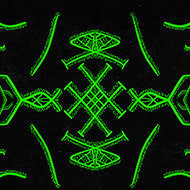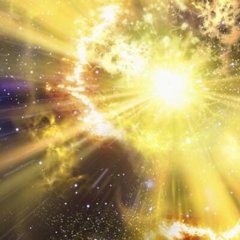-
Content count
42 -
Joined
-
Last visited
-
Days Won
2
About remod
-
Rank
Dao Bum
Recent Profile Visitors
1,511 profile views
-
I wanted to check to what extent a properly instructed AI could create a reasonable I Ching reading. It's an experiment, I'm not advocating using AI to consult the I Ching, just my curiosity and I wanted to share the results with you. I created two custom GPTs with chatGPT and passed them the Whilelm translation (a brand new, machine translated, version directly from German to avoid any copyright issue) and the Bradford Hatcher's translation. I also gave them the ability to cast hexagrams using the three-coins method (probabilities) and compared the outcome. I set up the question: "Should I move from this city to solve my issue problems?" and got 48.5. Here is how they look: Using Bradfortd Hatcher's translation Using the ML translated version of Whilelem German translation If you have a chatGPT plus subscription, you can use the two GPTs for yourself. If you put the answer before the question, it will use it for the reading, otherwise will toss the coins to generate a new response. For example the prompt: "48.5 Should I move from this city to solve my issue problems?" will use the indicate response, instead of generating a new one. The two readings are are quite similar, which is good sign. Some told me that the answers look "mechanical", "cold" and "non human" which is, of course, true. However, I feel it was worthwile to try and see the outcome for myself. If anyone is interested, I released everything on GitHub. You need a chatGPT pro subscription, unfortunately, but the python script that is at the core of it is pretty simple. And the prompt is self-explanatory (I believe). In doubt, just ask! Any feedback and comments will be appreciated.
-
Hi Guys! @silent thunder, Very nice of you to remember me! Life is treating me rather well. I should not complain (still I do from time to time ). How is it going for you? @aotvoid, I'm happy you liked my cards. I posted most of them on DA, some on this forum, and collected some of them also here: http://decks.castingiching.com/ I must confess I'm not sure I published on the web all of them, I just made too many Unfortunately, I'm not familiar with the other decks you mentioned but, if you are interested, I can help you devising a deck that could get you closer to the I Ching. Designing a new deck means answering these few questions: Would you use the cards for tracking the lines when casting? Would you use the cards for casting the lines? Would you like to be able to cast multiple lines at once (e.g. an entire trigram) If used for both, would you prefer to have separate designs for tracking and casting? How many cards would you prefer to use when casting (1/2/3/4/5/8/...)? Which odds do you expect to get (yarrow stalks/three coins/don't care)? Any preference for the size (poker/tarot/business card)? Any preference for the style? (i.e. Chinese related, abstract, no images, b/w, ...) I can suggest options and move from there. Of course, this is open to anyone interested
-
Thanks guys. I've also found the "Three Pure ones" that refer. to the earth/human/heaven concepts already mentioned. I'll try to get inspiration from this.
-
Is there any concept or image related to the number three relevant for the I Ching (or even Chinese culture in general)? I mean, we have the two types of lines, the four mythical animals (or cardinal points, or seasons), the five elements, the eight trigrams ... Nothing about the number three?
-
With the cards in front of me, I can say that they should be remade to make them more legible (as Mcoolio suggested). More than differentiate them from one another, the problem seems to be in the orientation. I'll go back to the drawing board (meaning try to convince Midjourney to produce something better )
-
Just got my printed cards from MPC. I've set up a project in their marketplace for those wanting to directly buy the printed cards from them: https://www.makeplayingcards.com/sell/castingiching I'll put there some other cards combination and a booklet with the explanations. Note that the price is practically the same as if you set up the project yourself, they asked to charge at least 1% on top of the pure production costs (12.70$ vs 12.55 for one deck). Shipping costs may vary depending on where you live (I had to pay 9.99$ for shipping).
-
I created other two cards to try to make it clearer that they can replace pen and paper to track the hexagram while it is forming. So, even if you use the coins, the stalks, or any other method, you may want to try using cards just for keeping track of the lines received. I've prepared a PDF file (11MB) that just needs to be printed/cut/glued/trimmed if anyone wants to try. For example, should you have received lines 7,6,8,7,9,7, you would have stacked the cards in the following way: and immediately would have gotten the hexagram 25 (with the 2nd and 5th line moving) on the right and the related hexagram on the left. Here you can see the front/back of each card: the image in the center is on the theme of "meditation". Here is a set I built for testing purpose: Actually, I feel they are too small, but I might be biased by the other cards I use which are larger. Personally, I find that having to stop after each line, pick up the pen and draw the lines is distracting and interrupts my "flow" in consulting the I Ching. Using cards like these, everything proceeds in a more fluid and natural way, with the action of noting down the received line being part of the casting process itself, rather than being a clearly different action. Any feedback will be really appreciated
-
This is completely subjective (and I also said earlier that I don't do interpretations for others ) but the part that would strike me the most is the two moving lines. If that was a response that I would have gotten, I would have read line 2 like this: "you have tools at your disposal, they are meant to be *used* (as opposed to just pondering about them). This will bring you results. There's no risk or issue on this" And in line 3 I would read a reminder to me that is the quality of the man that counts. What the "prince" can achieve the "common people" can't (regardless the tool). The fact that hex 14 is auspicious (Great fortune) could mean that it would be good for you to use the three coins, but it doesn't mean that it would be bad to continue using the stalks! I have always to remind myself that the I Ching is inclusive, not exclusive. Maybe It would be too stretched but I would get the hex 21 as a recommendation to move forward (bite through it). For what it worth, my take on this response is that the advice is that is good to use the three coins but it is more imporant to actually "do" something that will make you progress. Usual caveats and disclaimers apply
-
Let me echo Zerostao statement here because I know that sometimes I sound dry in my comments and my search on "casting methods" may seem just a trick I like to play with numbers. The first and most important aspect of I Ching, to me, is the connection between the question I pose and the answer, suggestion, hints, I get back. Everything else is secondary. Also, for me, it's extremely personal. I almost never do readings for others, I prefer teaching them the basics and let them develop their personal relationship with the I Ching. In the past forty+ years, the I Ching has been a constant presence in my life. Sometimes comforting me, sometimes scolding me, always helping me get my thoughts clearer. When I started my conversation with the I Ching there was no Internet, no easy way for me to learn from others. So I simply start reading, and in the ten wings I found something that clarified to me how the book should be used. I never forgot it. So, the focus was on me. How well would I read the words, how well would I ponder them. Would I become the "right man" so to get the "meaning"? That's what the I Ching is, for me. That said, the process to cast hexagrams is part of this conversation. Is a crucial part, I would say, and sometimes I felt it was "getting in the way". I've started using the 50 stalks (but sometimes I lost count of the stalks) and the three coins (but sometimes they rolled down to the floor) so I decided to try something else. What I was looking for (and I am still looking for to a certain extent) was something that, for me, could "flow" naturally and lead me from the question to the answer without interfering. That's why I embarked in this crazy journey of documenting existing casting methods and inventing new ones. I hope that if somebody feels that the casting method they're using is hindering their conversation rather than enhancing it, they could find an alternative that would feel more natural for them. No method is "better" than others, no method is more "true" than others, but there might be methods that resonate better with someone's view of the worlds, methods that could help you focus on the words and ponder the meaning. If I can help anyone to find their own personal method to cast hexagrams, the method that they feel "more natural", I will have spent very well my time.
-
No moving lines? It may depend on your question, of course, but it seems that the advice is not to switch to coins. Have you asked for coins in general (i.e. including the three coins method) or specifically for the 2/4 method?
-
In fact, I don't think it is explicitly said that the bundle is to be split in the middle but I always have assumed so. In the ten wings the process is described as such: They say to divide in two to represent the two primal forces. In my mind, this split should be in the middle or I would knowingly trying to steer the result into a certain direction (by favouring one or the other). Randomness is a strange beast and is directly related to our inability to predict the outcome. If I'd allow myself to do the split very close to one of the ends (say making the split so that two stalks are in on hand and the rest in the other) I would soon learn how to increase the probability of getting (or not getting) a specific line. Then I could start doing it unconsciously and, in practice, no longer get a "random" result but one that is tainted by my actions. That's why I always assumed that the proper way to split the bundle of stalks was to aim to split in the middle. Anyway, unless someone has a more authoritative source, I guess you're free to split as you prefer.
-
Yes, they are as long as you split the yarrow stalks bundle as close to the middle as you can. Splitting the stalks "unfairly" (say one stalk in one hand and all the others in the other hand) will make these probabilities change. However, since one is supposed to split the bundle in the middle, those are considered to be the "yarrow stalks" probabilities. You may notice that the probability to get a yin line is: 1/16 + 7/16 = 8/16 = 1/2 and the probability to get a yang line is: 3/16 + 5/16 = 8/16 = 1/2 i.e. you have 50% chances for a line to be yin or yang. All the methods that are said to "have the same probabilities of the yarrow stalks" use this probability distribution for their outcome. I got the 2 coins method from Clarity as well. I consider it full equivalent to the 4 coins method, with the advantage of being less confusing (no need to exactly count the number of heads, uses a 2/3 attribution similar to the three coins) and the drawback that you have to perform two steps (throwing the coins) for each line instead of one. Personally, I would use it only if I had just two coins and nothing else to cast a hexagram. If I may, I would suggest you to try Joel's method with 8 yarrow stalks. I made mine out of bamboo as I didn't have any Achillea Millefolium stalk around but if you do have access to them, I think you might like it. It's quick (only one shuffle/extraction per line), easy (no calculations or need to remember numbers), and uses the traditional yarrow stalks giving the same results (in terms of probabilities).
-
Thanks Harmen! I must confess I was hoping you had something on this topic! Thanks!
-
No, there is no such a thing as "more randomness". Let me try to clarify what I meant by "asymmetry". First of all, both coins and yarrow stalks produce yin or yang lines with the same probability (50%). Where they differ is in the probability that a line will change. Using the yarrow stalks, it's easier for a yang line to change than for a yin line to change. This suggests that things of yin nature are more "stable", they tend to persist in their state and are less prone to change. Things of yang nature, instead, are more "dynamic" and inclined to change. This is not the same view of the three coins. With coins there is no difference between yin and yang lines, they have exactly the same tendency to change. Now, if everything is "balanced" (as in the three coins), there is no real need for change, everything is in equilibrium. Things may happen or not, they may happen in a certain order or in the opposite order. They may cancel each other out. There is not a "direction". When an asymmetry exists, however, that asymmetry sets a "direction". it "points somewhere", makes things moving and this, to me, seems closer to what we experience every day. Most natural processes we are subject to, produce changes that are not reversible (i.e. they have a "direction"). You can burn wood to ash but you can't re-transform ash to wood. And even if you could, it would be immensely more difficult to go from ashes to wood than from wood to ashes as the preferred direction is where the entropy of the universe increases. It seems to me that yarrow stalks saying that some changes are more probable than others reflects the reality more closely than the three coins, where every change is equally probable. You can see wood turning to ashes, but it's very unlikely you'll see ashes turning to wood; and if you do, that must have a very special meaning. That's the reason for my preference for yarrow stalks over the three coins, they include in their view a sense of "flow" that the three coins miss. These are just personal thoughts, of course, others may have views that would make them prefer an equally probable universe and it's perfectly fine. Yes, for me using 4 coins or the yarrow stalks is the same thing. One reason they didn't catch up as a method, I think, is that you have to recognize moving lines by the fact that there are *exactly* three heads in the outcome, four heads do not count as moving line and this may be confusing. At least this is why I don't use it. To my knowledge, using 16 beads (with the appropriate colors) is a very commonly used method to replace the yarrow stalks. This is something I'm absolutely not qualified to comment. However, if using Achillea Millefolium is significant, Joel Benson devised a way of using only 8 sticks while still retaining the same outcome odds. I initially found it on Clarity, and then, with Joel permission, reposted on my site. I also made a slight modification to make it easier. Please don't use an online generator unless you are very, very, sure of the quality of their random generator! I've seen sites using very poor random number generators which, to me, makes them completely useless (I think I remember one that didn't allow yin lines after a moving yang line). I created an online generator that takes the user actions (click or mouse hoover) as a basis to generate random events but still, I won't recommend using it as a regular replacement for coins or stalks. Generating random numbers is a very complex and delicate task, it's extremely easy to mess things up.
-
I'm trying to nail down the (of course, approximate) date of documented use of the three coins for casting I Ching hexagrams. I know the initial method of using cracks in turtle shells o ox bones is long lost. I've also read that methods using stalks were in use for a long time but their details are lost as well and the yarrow stalks method we currently use is a reconstruction dating the XIII century. I seem to remember that usage of the three coins is documented to exist around the VIII century. My problem is that I have no source for all this I've read a lot of articles and books along the years but I didn't keep track of what was in which book and how reliable it was. I'm pretty sure my memory is right but we all know that our minds can play nasty tricks on us and having a more solid foundation is much much better. Does anyone know of authoritative sources that can be cited to support (or deny!) what I remember from my readings? Thanks!







